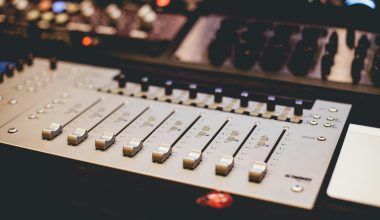Do you dream of strumming a guitar while singing your favorite song? Learning to play the acoustic guitar can make that dream come true. Acoustic guitars are not only beautiful but also very versatile. They can be used for playing almost any type of music – from soft and emotional ballads to energetic pop songs.
If you are a beginner, don’t worry! This guide will take you through everything you need to know to start your acoustic guitar journey. We’ll make it fun, easy, and exciting, so you can enjoy every step of learning.
What Makes Acoustic Guitars Special?
An acoustic guitar is one of the best instruments to start your musical journey. Here’s why:
- Natural Sound: You don’t need amps or speakers to play an acoustic guitar. Its hollow body produces a warm and rich sound on its own.
- Portable: Want to take your guitar to a picnic or a friend’s house? No problem! Acoustic guitars are lightweight and easy to carry.
- Perfect for Beginners: Unlike electric guitars, acoustic guitars don’t need extra equipment. All you need is the guitar and your enthusiasm.
Learning with acoustic guitar tutorials makes the process even smoother. Step by step, you’ll see your skills improve.
Getting to Know Your Acoustic Guitar
Before you start playing, it’s important to know your guitar. Here are the main parts of an acoustic guitar:
- Body: The large wooden part that produces the sound.
- Strings: Six strings, each creating a different note.
- Fretboard: The long part with metal strips where you press your fingers to make sounds.
- Bridge: Holds the strings in place on the body.
- Tuning Pegs: Small knobs at the top to tighten or loosen strings for tuning.
Spend some time holding your guitar and getting comfortable with its parts.
What You Need to Start Playing
Getting ready to learn is easy! Here’s what you’ll need:
- Your Guitar: A beginner-friendly acoustic guitar with nylon strings (softer on fingers) is a good choice.
- Picks: These small plastic tools help you strum or pluck the strings.
- Tuner: To make sure your guitar sounds right, use a tuner to adjust the strings.
- Capo: This handy tool changes the pitch of the strings to play songs in different keys.
How to Tune Your Acoustic Guitar
Before you start playing, you need to tune your guitar. Tuning ensures each string produces the right sound. Follow these steps:
- Download a tuner app or use a digital tuner.
- Pluck each string and adjust its tuning peg until the sound matches the correct note.
- 6th string: E (the thickest string).
- 5th string: A.
- 4th string: D.
- 3rd string: G.
- 2nd string: B.
- 1st string: E (the thinnest string).
If you’re unsure, a good acoustic guitar tutorial on YouTube can guide you through tuning.
First Steps to Playing Acoustic Guitar
1. Holding the Guitar
Sit on a chair and rest the guitar on your thigh. Keep your back straight and hold the neck of the guitar with your left hand. Strum with your right hand (reverse this if you’re left-handed).
2. Learning Basic Chords
Chords are the foundation of most songs. Start with these simple ones:
- C Major: Place your fingers on specific frets to create this happy-sounding chord.
- G Major: A versatile chord used in many songs.
- D Major: Great for beginners to practice transitions.
- E Minor: One of the easiest chords.
- A Minor: A softer, moodier sound.
Practice switching between these chords slowly. Your fingers will get stronger and faster with time.
Strumming: Adding Rhythm to Your Playing
Strumming is how you bring life to your chords. Begin with:
- Downstrokes: Strumming downward across all the strings.
- Upstrokes: Strumming upward, starting from the thinner strings.
- Patterns: Combine downstrokes and upstrokes in a rhythm, like “down, down, up, down.”
Use simple patterns and slowly increase speed as you get comfortable.
Reading Guitar Tabs
Tabs (short for tablature) are a way to write down guitar music. Each string is shown as a line, and numbers indicate which fret to press. For example:
This shows how to play a C Major chord. Tabs are easy to learn and open the door to playing many songs.
Practicing Made Simple
- Set Goals: Start small, like learning one chord per day.
- Short Sessions: Practice for 15–20 minutes daily instead of long, tiring sessions.
- Play Songs: Choose simple songs like “Knockin’ on Heaven’s Door” or “Stand By Me.”
- Have Fun: Play with friends or record yourself to track progress.
Taking Your Skills to the Next Level
Once you’re comfortable with basics, try:
- Fingerpicking: Use your thumb and fingers to pluck strings for a delicate sound.
- Barre Chords: These are harder but let you play more songs.
- Harmonics: Lightly touch strings to create bell-like tones.
Best Acoustic Guitar Tutorials
YouTube Channels
- Justin Guitar: Step-by-step tutorials.
- GuitarLessons.com: Beginner-friendly lessons.
- Marty Music: Fun and engaging tutorials.
Apps
- Fender Play: Lessons for all levels.
- Yousician: Interactive and easy to follow.
- Ultimate Guitar: Access to chords and tabs for thousands of songs.
Common Beginner Struggles (And How to Overcome Them)
- Sore Fingers: This is normal! Play regularly to build calluses.
- Buzzing Sounds: Press the strings firmly and avoid touching other strings.
- Slow Chord Changes: Practice slowly until transitions feel natural.
How to Stay Motivated
- Celebrate Milestones: Did you learn a song? Celebrate with a treat!
- Join a Community: Connect with fellow learners on Reddit or local meetups.
- Experiment: Try different styles like rock, folk, or blues to keep things exciting.
A Final Word of Encouragement
Learning to play the acoustic guitar is a journey, not a race. With regular practice, patience, and passion, you’ll see amazing progress. Start with these easy acoustic guitar tutorials, and soon you’ll be playing your favorite songs effortlessly.
Music is about joy and expression, so enjoy every strum and chord. Pick up your guitar, and let’s make music!
Related Articles:
For further reading, explore these related articles:
For additional resources on music marketing and distribution, visit DMT RECORDS PRIVATE LIMITED.






